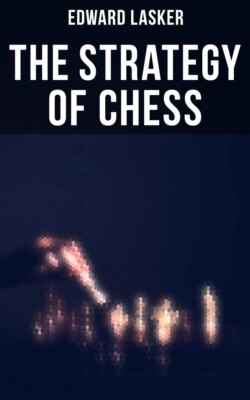Читать книгу The Strategy of Chess - Edward Lasker - Страница 3
AUTHOR’S PREFACE
ОглавлениеThe large majority of chess players who would like to improve their game, have not the necessary opportunity of pitting themselves against players of master-strength, or at least of obtaining the desired instruction from personal intercourse with them. It is for such players that the present work is intended. The books on which the learner has to rely hardly ever serve his purpose, being mostly little more than a disjointed tabulation of numberless opening variations, which cannot be understood without preliminary studies, and consequently only make for confusion. In the end the connection between the various lines of play may become clear, after the student has made an exhaustive study of the subject, but very few would have either the time or the inclination for such prolonged labour.
Therefore another shorter and less empirical way must be found in which to acquire the understanding of sound play. My system of teaching differs from the usual ones, in that it sets down at the outset definite elementary principles of chess strategy by which any move can be gauged at its true value, thus enabling the learner to form his own judgment as to the manœuvres under consideration. In my opinion it is absolutely essential to follow such strategical principles, and I go so far as to assert that such principles are in themselves sufficient for the development and conduct of a correct game of chess.
Even though instruction in chess is possible on very general lines alone, yet I think it advisable and indeed necessary to explain the application of such principles to the various phases of each game of chess. Otherwise the learner might unduly delay his progress, and lose valuable time in finding out for himself certain essentials that could more profitably be pointed out to him.
With regard to the way in which I have arranged my subject and the form of its exposition in detail, I have thought out the following plan.
After discussing at length the leading principles underlying sound play, I have first treated of the openings, in which such principles are of even more deciding influence than in any other stage of the game, as far as could be done on broad lines without having to pay attention to middle and end-game considerations.
I proceeded as follows, by taking as my starting-point the “pawn skeleton” which is formed in the opening, and round which the pieces should group themselves in logical fashion. As a consequence of the pawns having so little mobility, this “pawn skeleton” often preserves its shape right into the end-game. Applying the general strategical principles to the formation of the pawn skeleton, the learner acquires the understanding of the leading idea underlying each opening without having to burden his memory. Not only that, he will also be able to find a correct plan of development when confronted with unusual forms of opening.
The most important result of this system of teaching is that the learner does not lose his way in a maze of detail, but has in view at the very outset, the goal which the many possible variations of the openings are intended to reach.
Before I could proceed to the discussion of the middle game, I found it necessary to treat of the principles governing the end-game. For in most cases play in the middle game is influenced by end-game considerations. Here also it has been my endeavour as far as possible to reduce my subject to such principles as are generally applicable.
Finally, as regards the middle game, to which the whole of Part II is devoted, I have again made the handling of pawns, the hardest of all problems of strategy, the starting-point for my deliberations. I have shown at length how the various plans initiated by the various openings should be developed further. To ensure a thorough understanding of the middle game, I have given a large number of games taken from master play, with numerous and extensive notes. Thus the student has not to rely only on examples taken haphazard from their context, but he will at the same time see how middle-game positions, which give opportunities for special forms of attack, are evolved from the opening.
It has been my desire to make the subject easily understandable and at the same time entertaining, and to appeal less to the memory of my readers than to their common sense and intelligence. I hope in that way not to have strayed too far from the ideal I had in mind when writing this book, namely, to apply to chess the only method of teaching which has proved productive in all branches of science and art, that is, the education of individual thought.
If I have succeeded in this, I shall have the satisfaction of having contributed a little to the furthering, in the wide circles in which it is played, of the game which undoubtedly makes the strongest appeal to the intellect.
EDWARD LASKER.
